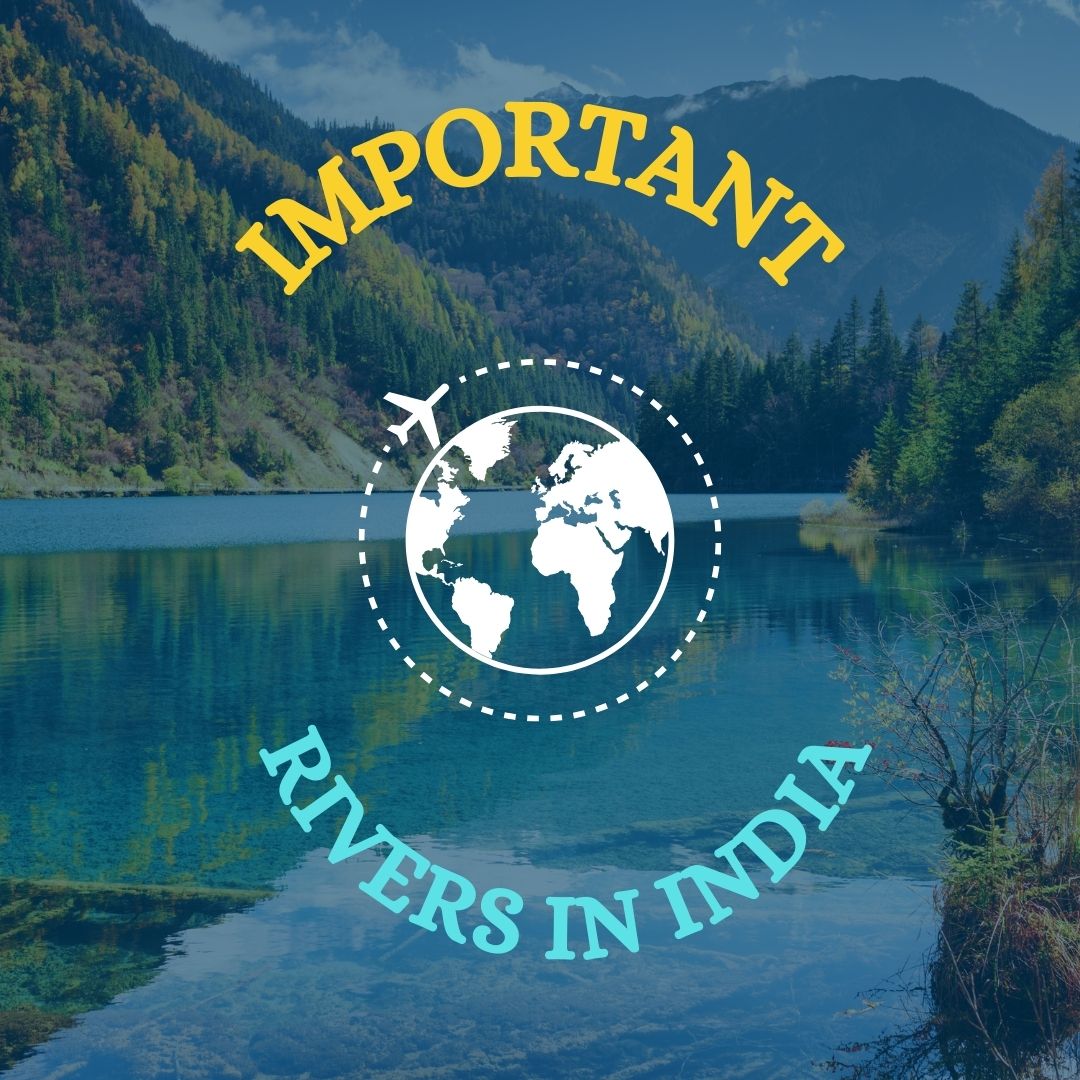Important Rivers in India: Lifelines of the Nation
India, with its diverse geography and rich cultural heritage, is home to numerous rivers that play a crucial role in the country’s agriculture, economy, and culture. These rivers, often considered sacred, have shaped the lives of millions of people for centuries. Here’s a detailed look at some of the most important rivers in India.

1. The Ganges (Ganga)
Source: Gangotri Glacier, Uttarakhand
Length: 2,525 km
The Ganges is not just a river but a symbol of India’s cultural and spiritual ethos. Flowing through the northern plains, it is the most revered river in Hinduism. The Ganges supports millions of people through agriculture, providing fertile soil and water for irrigation. Major cities along its course include Haridwar, Kanpur, Varanasi, and Kolkata.
2. The Yamuna
Source: Yamunotri Glacier, Uttarakhand
Length: 1,376 km
A major tributary of the Ganges, the Yamuna River flows through several important cities like Delhi, Mathura, and Agra. The river is essential for agricultural and drinking water supply, supporting a large population in the northern part of India.
3. The Brahmaputra
Source: Angsi Glacier, Tibet
Length: 2,900 km (in India: 916 km)
Originating in Tibet and flowing through the northeastern region of India, the Brahmaputra is known for its powerful flow and the fertile plains it creates. It plays a vital role in the agriculture and livelihoods of people in Assam and Arunachal Pradesh.
4. The Indus
Source: Tibetan Plateau, China
Length: 3,180 km (in India: 1,114 km)
The Indus River, one of the longest rivers in the world, flows through the regions of Ladakh and Jammu & Kashmir. It has historically been the cradle of the Indus Valley Civilization, one of the world’s earliest urban cultures.
5. The Godavari
Source: Trimbakeshwar, Maharashtra
Length: 1,465 km
Often referred to as the “Dakshina Ganga” or “Ganges of the South,” the Godavari is the second-longest river in India. It traverses through central and southern India, supporting a vast network of agriculture and providing water for irrigation, drinking, and industrial use.
6. The Krishna
Source: Mahabaleshwar, Maharashtra
Length: 1,400 km
The Krishna River flows through the states of Maharashtra, Karnataka, Telangana, and Andhra Pradesh. It is a major source of irrigation in these regions, sustaining the agricultural economy and supporting the livelihoods of millions of farmers.
7. The Narmada
Source: Amarkantak Plateau, Madhya Pradesh
Length: 1,312 km
The Narmada River flows westward, unlike most other major Indian rivers, and empties into the Arabian Sea. It is crucial for irrigation and hydroelectric power generation, with several dams constructed along its course, including the Sardar Sarovar Dam.

8. The Mahanadi
Source: Sihawa, Chhattisgarh
Length: 858 km
Flowing through the states of Chhattisgarh and Odisha, the Mahanadi River is known for its extensive delta and fertile plains. The Hirakud Dam on the Mahanadi is one of the largest earthen dams in the world and plays a significant role in flood control and irrigation.
9. The Kaveri (Cauvery)
Source: Talakaveri, Karnataka
Length: 765 km
The Kaveri River is a lifeline for the states of Karnataka and Tamil Nadu. Known for its sacred significance, it supports extensive agriculture, especially the cultivation of rice, and is vital for the region’s water supply.
10. The Tapti
Source: Satpura Range, Madhya Pradesh
Length: 724 km
The Tapti River flows westward and parallels the Narmada before emptying into the Arabian Sea. It is important for irrigation and supports agriculture in the states of Madhya Pradesh, Maharashtra, and Gujarat.
Conclusion
India’s rivers are more than just bodies of water; they are integral to the nation’s socio-economic fabric, cultural traditions, and natural ecosystems. These rivers have nurtured civilizations, supported agriculture, and provided water for drinking and industrial use. Protecting and preserving these rivers is crucial for sustaining India’s environment and ensuring the well-being of future generations.





